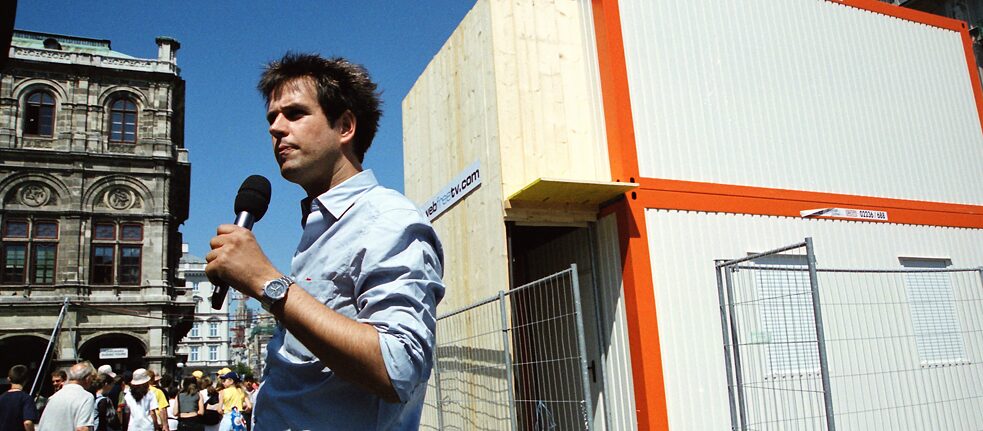The art of Joseph Beuys
Shaping society like a sculpture
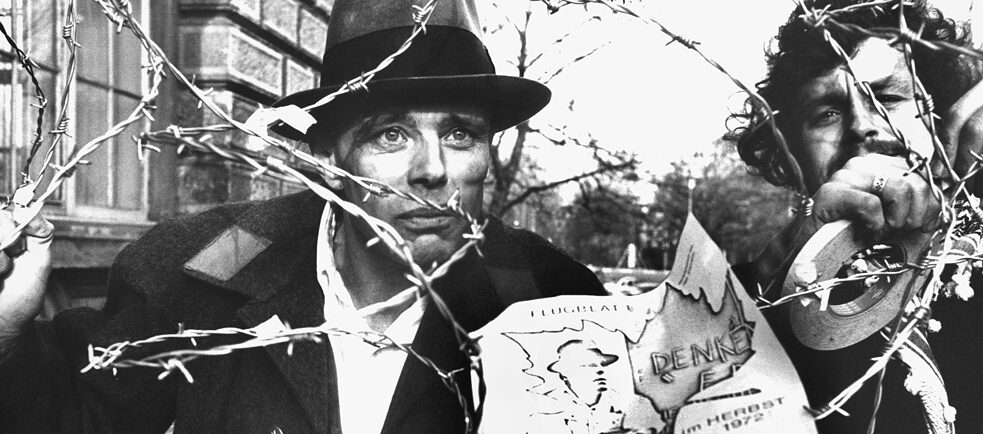
Joseph Beuys was a draftsman, sculptor, performance and installation artist, teacher, politician, and activist – and one of the most important artists of the 20th century. His art continues to have an impact today.
By Petra Schönhöfer
He pushed boundaries to the point where it sometimes hurt. Was supposed to hurt. And even those who have never seen one of Joseph Beuys’ pieces are probably familiar with his frequently cited but often misunderstood phrase: “Every person is an artist.” He was not claiming that everyone was a painter, an architect, or a composer, and arguing instead that every form of human activity could lay claim to an element of art. Beuys’ radical view fundamentally changed the nature, materiality, boundaries and purpose of art to this day.
Joseph Beuys was considered extremely charismatic. With his eagerness to interact with the media and the ruthlessness with which he featured himself in his art installations to the point where it endangered his health, he exerted great influence on young artists. The list of his students from his time as professor at the Düsseldorf Art Academy reads like a Who’s Who of the early art scene in the Federal Republic of Germany: Imi (Klaus Wolf) Knoebel, Imi (Rainer) Giese, Blinky Palermo, Norbert Tadeusz, Anatol Herzfeld, Bazon Brock, Chris Reinecke, Katharina Sievering, Erinna König, Reiner Ruthenbeck, Johannes Stüttgen – they all joined the Professor of Monumental Sculpture in Classroom 19. Jörg Immendorff is still one of Beuys’ best-known international students today. The painter, sculptor and art professor, who died in 2007, began attending Beuys’ classes in 1964. For decades afterward, Immendorff continued to grapple with his relationship to Beuys, who died in 1986, and who encouraged him to take up completely new themes and forms in his painting.
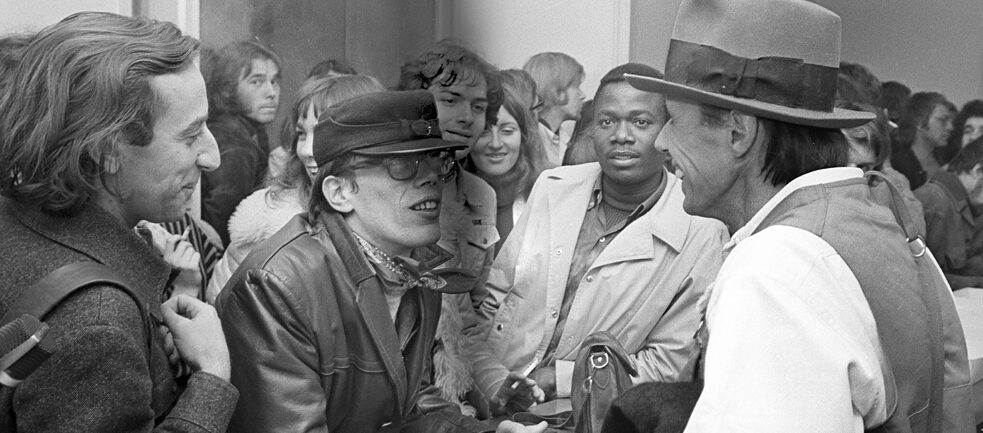 Joseph Beuys (right) at the Düsseldorf Art Academy: on October 15, 1971 he and around 30 students occupied the secretariat to demand a meeting with Minister of Science Johannes Rau to discuss the Academy’s controversial admission procedure.
| Photo (detail): © picture alliance / Wilhelm Leuschner
Joseph Beuys (right) at the Düsseldorf Art Academy: on October 15, 1971 he and around 30 students occupied the secretariat to demand a meeting with Minister of Science Johannes Rau to discuss the Academy’s controversial admission procedure.
| Photo (detail): © picture alliance / Wilhelm Leuschner
Sculpting society
Beuys called for a radical change in society with the content of his work. Like no other artist of his time, he tied art to society, linking it with politics, science, philosophy and economics. This all arose from his theory of social sculpture, which he notably implemented at the 1982 documenta 7 exhibition in Kassel with his social-ecological piece 7000 Eichen – Stadtverwaldung statt Stadtverwaltung (7,000 Oaks – Urban Forestation instead of City Administration). Beuys and many volunteers planted 7,000 trees, each with a basalt stone pillar, at various locations in Kassel over the course of five years. Initially controversial, the project has now become a defining element of Kassel’s cityscape.
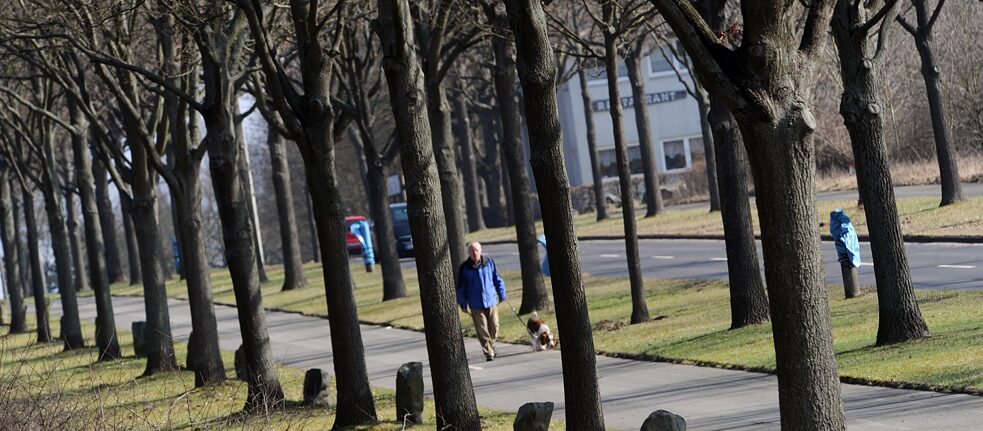 “7,000 Oaks”: Joseph Beuys’ art installation for the documenta 7 continues to shape Kassel’s cityscape to this day – a dog walker strolls up an avenue of Beuys trees thirty years later in 2012.
| Photo (detail): © picture alliance / dpa / Uwe Zucchi
The artist called actions not limited to a completed piece and instead included the creative thoughts and actions of a human being social sculpture. With this concept, he laid the foundation for the prevailing concept of art today. Since then, art has expanded out of the studio to emerge on location in social hotspots as well. Contemporary artists use participatory formats to try and improve the living situations of the disadvantaged. Beuys supposedly said, “shaping social order like a sculpture is both my and the calling of art.”
“7,000 Oaks”: Joseph Beuys’ art installation for the documenta 7 continues to shape Kassel’s cityscape to this day – a dog walker strolls up an avenue of Beuys trees thirty years later in 2012.
| Photo (detail): © picture alliance / dpa / Uwe Zucchi
The artist called actions not limited to a completed piece and instead included the creative thoughts and actions of a human being social sculpture. With this concept, he laid the foundation for the prevailing concept of art today. Since then, art has expanded out of the studio to emerge on location in social hotspots as well. Contemporary artists use participatory formats to try and improve the living situations of the disadvantaged. Beuys supposedly said, “shaping social order like a sculpture is both my and the calling of art.”
“Although I am not particularly fond of the phrase, the idea of social sculpture is perhaps Beuys’ greatest artistic legacy,” philosopher and activist artist Philipp Ruch explains. He heads the Centre for Political Beauty (ZPS), an association of activist artists and creative minds that has been causing a stir in Germany with provocative art projects since 2009. “Instead of rock, activist artists hew society itself. Their medium is political reality rather than conventional materials.”
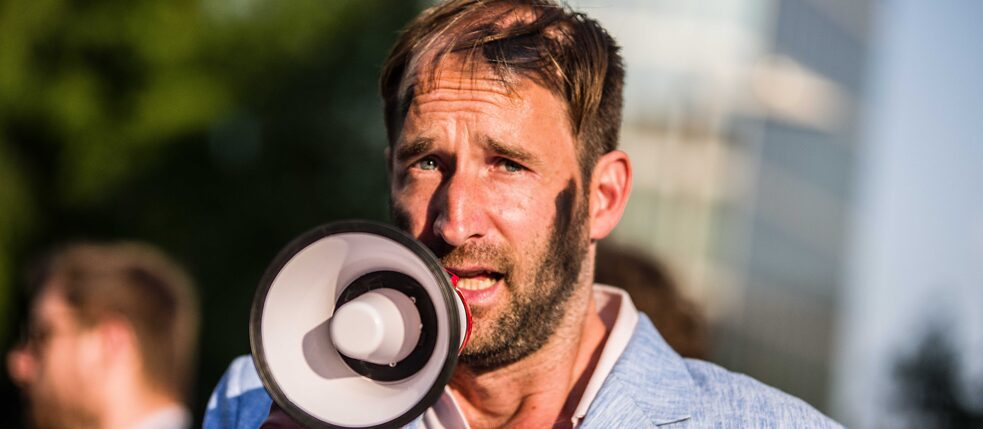 Philipp Ruch, the director of the artist collective Centre for Political Beauty, in Berlin in 2018.
| Photo (detail): © picture alliance / ZUMAPRESS.com / Sachelle Babbar
Philipp Ruch, the director of the artist collective Centre for Political Beauty, in Berlin in 2018.
| Photo (detail): © picture alliance / ZUMAPRESS.com / Sachelle Babbar
Enlightenment through distress
Beuys is also a key figure in understanding the work of Christoph Schlingensief. The German theatre and film director, author, and activist artist, who died in 2010, made no secret of his admiration for Beuys. The reference to Beuys is clearly evident in Schlingensief’s socially critical pieces, such as Ausländer raus! Schlingensief’s Container (Foreigners Out! Schlingensief’s Container) an art and film project at the 2000 Vienna Festival. The concept behind the performance piece was taken from the Big Brother TV show: Asylum seekers gathered in a container were voted out of the space daily by the public, clearing them for deportation from Austria.
With the controversial project, Schlingensief pushed dramatic performance art even further than his idol Beuys, who provoked and fundamentally challenged the art scene but did hit the social pain threshold as hard. “In his time, Beuys pushed the door open for Schlingensief to what we now call ‘the action’,” Ruch explains. Schlingensief is to ZPS what Beuys was to Schlingensief, he adds: “ZPS has smashed open society with over 20 actions in the past 12 years. Every single one would have been unthinkable without Schlingensief – and thus also without Beuys. Art has to hurt, irritate and disturb. Schlingensief called it enlightenment through disturbance.”
